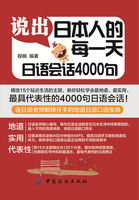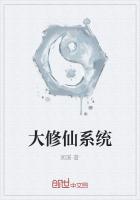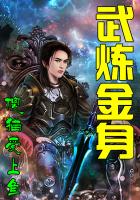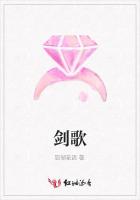All of the Maseratis were involved in the engineering, design and construction of cars, except for Mario, who was a painter and artist. However Marios contribution to the Maserati company was just as important and lasting as his engineer brothers: he created the company trademark, the Trident, inspired by the statue of Neptune in the square of the same name in their home city of Bologna.
The first of the brothers to become involved with engines was Carlo, who worked in a bicycle factory in Affori, near Milan. He designed a single-cylinder engine for a velocipede, which was later manufactured by the Marquis Carcano di Anzano del Parco. Carlo Maserati also raced on Carcano bikes equipped with the engine he had designed, winning a few races and setting a speed record of 50 km/h (31 mph) in 1900.
Carlo moved to Fiat in 1901 when Carcano closed down and then, in 1903, to Isotta Fraschini, where he worked as a mechanic and test driver. Thanks to his influence, Isotta also employed his brother Alfieri, despite the fact that he was only 16 at the time. Carlo had a brilliant but ultimately short career, dying when he was just 29, by which time he had worked and raced for Bianchi, become General Manager of Junior, and started up his own workshop with his brother Ettore to manufacture both low and high voltage electrical transformers for cars.
Alfieri soon emerged as Carlos spiritual heir, with the same extrovert personality and skills as a technician and driver. In 1908 Isotta entrusted a car to him which he brought home in 14th place in the Grand Prix for Voiturettes in Dieppe, despite his carburettor breaking. In the meantime, Bindo and Ettore had also joined Isotta Fraschini, where Alfieri had started out as a mechanic and progressed to driving. In 1912, after having represented the company in Argentina, the USA and Great Britain with his brother Ettore, Alfieri was put in charge of Isottas customer service structure in Bologna.
The wide-ranging experience he had built up during his career convinced Alfieri that he was ready to explore the possibility of going into business in his own right to exploit his talents and creativity to the fullest extent. In 1914 he rented office space in Via dé Pepoli, in Bolognas old town centre and this went on to become the first headquarters of the Società Anonima Officine Alfieri Maserati.
The beginning: from 1914 to 1937
After the First World War, the company moved from Via dé Pepoli to new offices in the suburbs of Bologna.
The Maserati brothers main activity was still tuning Isotta Fraschini cars, but they also worked on other marques.
Alfieri began his career as a racing driver and soon proved his worth, winning on the Susa-Moncenisio, the Mugello Circuit and the Aosta-Great Saint Bernard. Diatto offered him a chance to design cars for the company and even to race with them. Unfortunately, in 1924, after having dominated the San Sebastiano GP, he was disqualified for five years, even though he had retired, for having replaced the 2-litre engine in his car with a 3-litre unit. The penalty was lifted a few months later.
Away from the racing world, Alfieri completely dedicated himself to the workshop and in 1926, after leaving Diatto, he produced the Tipo 26, the first all-Maserati car, and the first to sport the trident badge. The Tipo 26 won its class in its debut race, the Targa Florio, and was driven by Alfieri Maserati himself.
In 1927 Alfieri had a serious accident in the Messina Cup at the wheel of the Tipo 26B, after taking third place at the Targa Florio. But even with him sidelined, Maserati still won the Italian Constructors Championship. In 1929 the V4 appeared, with a 16-cylinder engine, ****** its debut at the Italian Grand Prix and setting the world Class C speed record over 10 km at 246.069 km/h in Cremona, with Baconin Borzacchini.
The record set by the V4 helped to further enhance the companys image and guaranteed a considerable influx of funds, allowing both the company and its activities to expand. In 1930 the V4 driven by Borzacchini won Maseratis first outright Grand Prix victory in Tripoli.
In 1931 came the 4CTR and the front-wheel-drive 8C 2500, the last car to be designed by Alfieri Maserati, who died on March3, 1932. An enormous crowd attended his funeral in Bologna, including workers from the plant, famous drivers and ordinary people, who all wanted to show their affection for the great man.
Alfieris death did not discourage the Maserati brothers; Bindo left Isotta Fraschini and returned to Bologna to continue the great venture begun by Alfieri, alongside Ernesto and Ettore. Maseratis racing activities continued to be both intense and successful; an 8-cylinder, 3-litre engine also appeared.
In 1933 Tazio Nuvolari joined the team, ****** a significant technical contribution, particularly in fine tuning the chassis, adapting it to the characteristics of the new engine; Nuvolari won the Belgian Grand Prix, and those of Montenero and Nice. That was when Mercedes-Benz and Auto Union began a sustained assault on the racing scene, ****** life difficult for Maserati in the more important races.
In spite of this, the company continued to notch up victories in more minor, national races, and this led the brothers to concentrate output in this area. In 1936 they found a patron in Gino Rovere who invested a great deal in the company and appointed Nino Farina, his protégé, as Chairman. The 6CM appeared, which gave Maserati the competitive edge in the voiturette class.
The golden years: from 1937 to 1967
In 1937 the Maserati brothers sold their shares in the company to the Orsi family from Modena.
The company relocated from Bologna to the now historic headquarters on Viale Ciro Menotti in Modena. Ernesto had already designed the 4CL and 8CL engines, which powered the cars of the same name in the late 1930s. The Maserati brothers stayed on in Modena as chief engineers until 1948.














